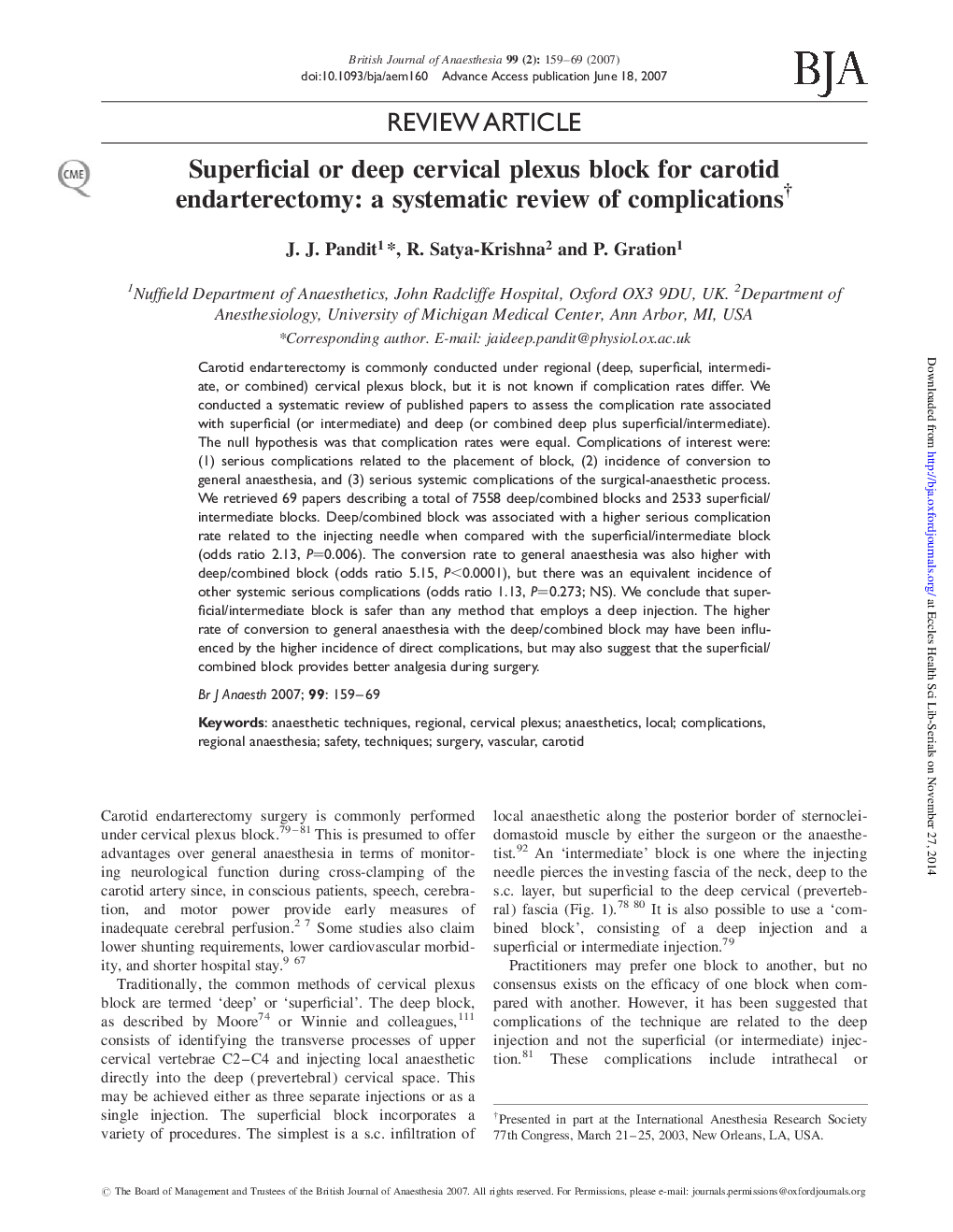| Article ID | Journal | Published Year | Pages | File Type |
|---|---|---|---|---|
| 8938732 | British Journal of Anaesthesia | 2007 | 11 Pages |
Abstract
Carotid endarterectomy is commonly conducted under regional (deep, superficial, intermediate, or combined) cervical plexus block, but it is not known if complication rates differ. We conducted a systematic review of published papers to assess the complication rate associated with superficial (or intermediate) and deep (or combined deep plus superficial/intermediate). The null hypothesis was that complication rates were equal. Complications of interest were: (1) serious complications related to the placement of block, (2) incidence of conversion to general anaesthesia, and (3) serious systemic complications of the surgical-anaesthetic process. We retrieved 69 papers describing a total of 7558 deep/combined blocks and 2533 superficial/intermediate blocks. Deep/combined block was associated with a higher serious complication rate related to the injecting needle when compared with the superficial/intermediate block (odds ratio 2.13, P = 0.006). The conversion rate to general anaesthesia was also higher with deep/combined block (odds ratio 5.15, P < 0.0001), but there was an equivalent incidence of other systemic serious complications (odds ratio 1.13, P = 0.273; NS). We conclude that superficial/intermediate block is safer than any method that employs a deep injection. The higher rate of conversion to general anaesthesia with the deep/combined block may have been influenced by the higher incidence of direct complications, but may also suggest that the superficial/combined block provides better analgesia during surgery.
Related Topics
Health Sciences
Medicine and Dentistry
Anesthesiology and Pain Medicine
Authors
J.J. Pandit, R. Satya-Krishna, P. Gration,
